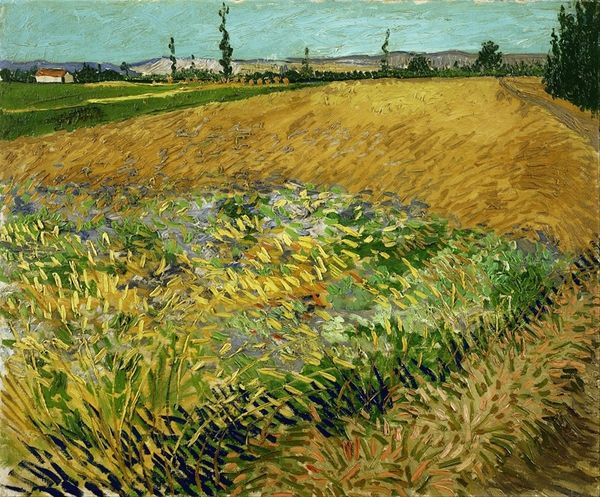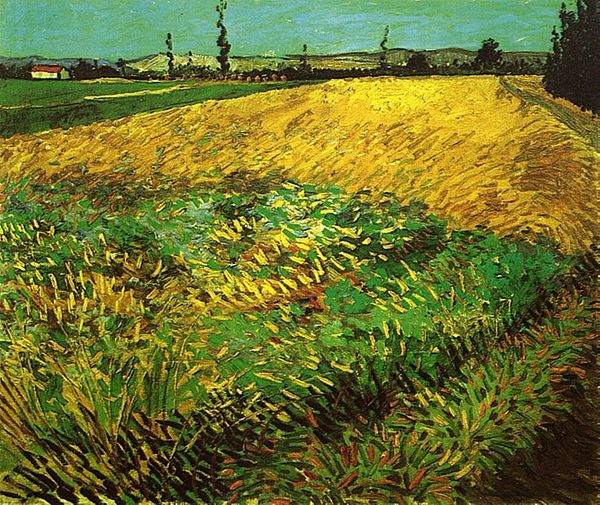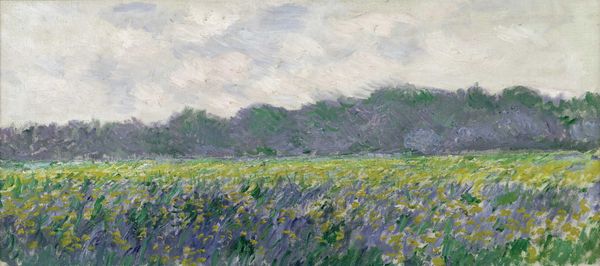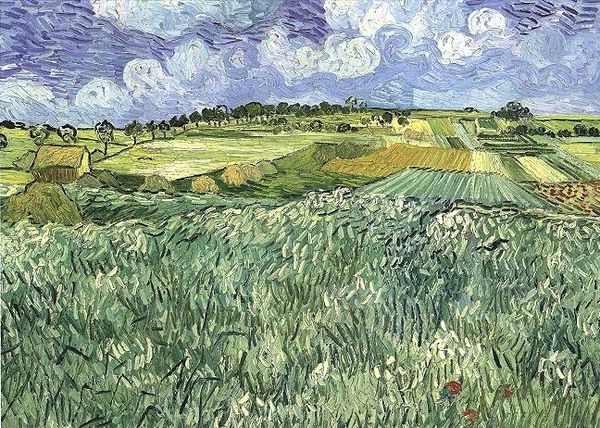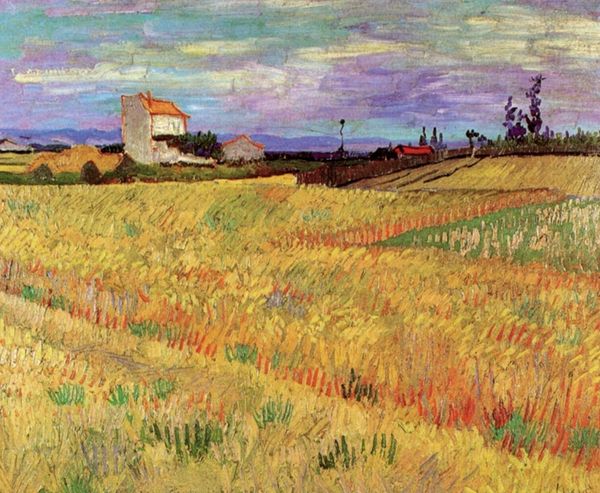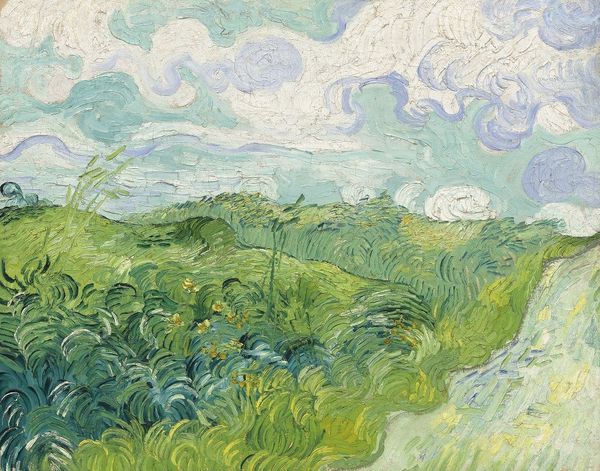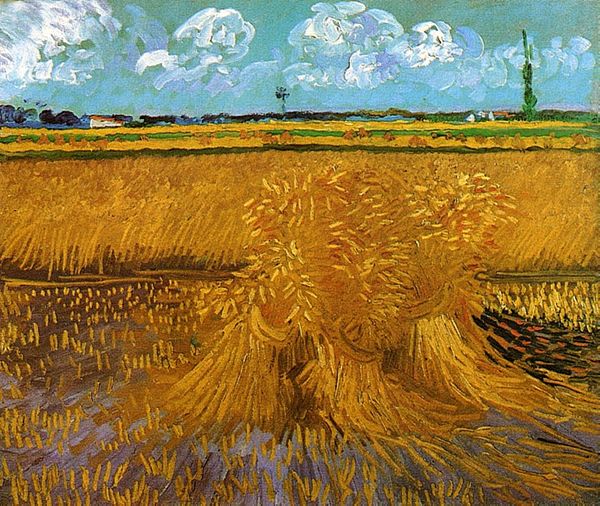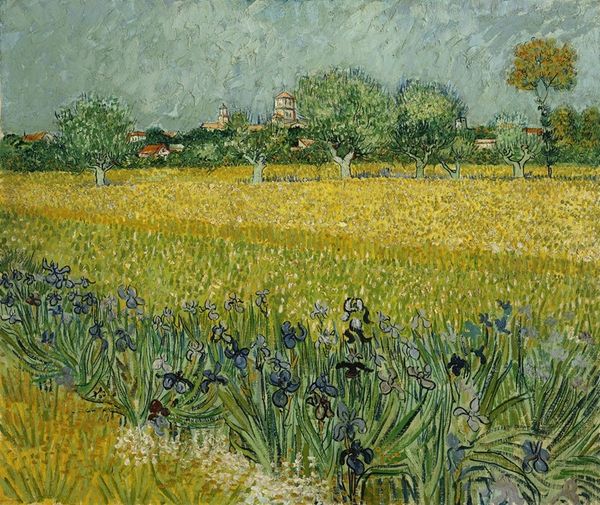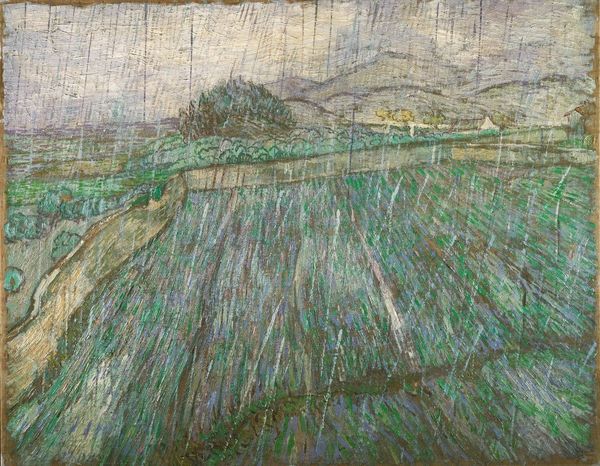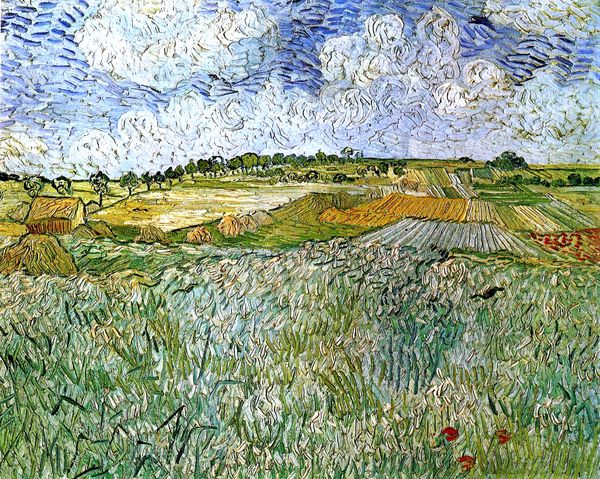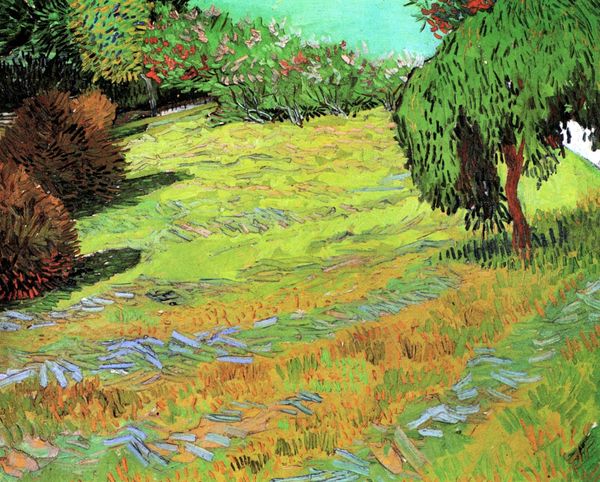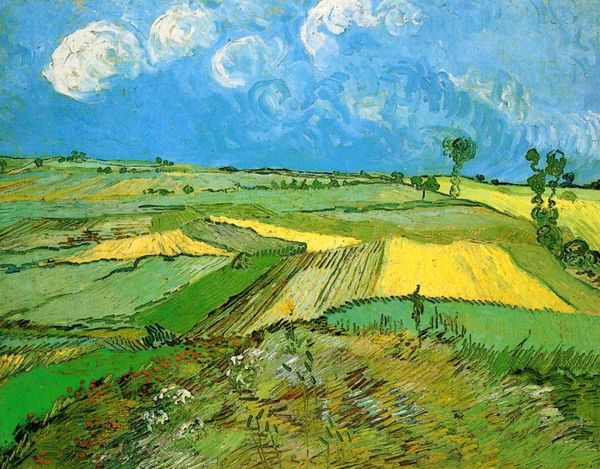
painting, oil-paint
#
impressionist
#
painting
#
impressionist painting style
#
oil-paint
#
landscape
#
impressionist landscape
#
expressionism
#
post-impressionism
#
expressionist
Copyright: Public Domain: Artvee
Curator: "House at Auvers", attributed to Vincent van Gogh, presents a captivating vista with its dynamic brushstrokes. It appears to be crafted in oil. Editor: My initial impression is one of almost unsettling vibrancy. The undulating field practically pulses with energy, despite the tranquility usually associated with landscape painting. Curator: Precisely. Notice how the composition adheres less to perspectival accuracy and more towards emotional expression through formal distortions? The field dominates the foreground with these repetitive, directional strokes leading towards a less emphasized house, flattened and seemingly distant. Editor: The house feels almost ghostlike, doesn’t it? Positioned as it is behind the charged field, like a sanctuary or idealized refuge that the turbulent foreground actively obstructs. The symbolic opposition intrigues me. Do you think it is intentional? Is this tension purely formal or symbolically suggestive? Curator: Arguably, that ambiguity is its power. Van Gogh employs a technique of impasto that gives real volume and dimension to this artwork's surface, almost sculpting the light and shadow and directing the gaze across this textural plain. Editor: Light and shadow as tools of emotional, not just representational, language. Van Gogh doesn't simply paint a field; he embodies a feeling associated with it. Fields themselves often function as powerful symbols: harvest, transition, the abundance of the natural world... but here it is somewhat agitated. I also note the white flowers throughout this plane, which perhaps signal mourning or spirituality, disrupting the serenity of the view. Curator: Indeed. The painting evokes a certain melancholic grandeur despite, or perhaps because of, the restless, textured applications. Its structural choices emphasize feeling over exact depiction, challenging any serene symbolism we might initially anticipate from a rural scene. Editor: Yes, the genius may reside in its dualities: tranquility and unease, flatness and depth, literal and symbolic all coalescing on the canvas. This piece makes me appreciate the visual grammar which guides feeling! Curator: An evocative synthesis, indeed. The artist wields an interplay of elements: directionality, hue, and application, forging both surface depth and a portal for contemplation, which extends the legacy of expressionism.
Comments
No comments
Be the first to comment and join the conversation on the ultimate creative platform.

